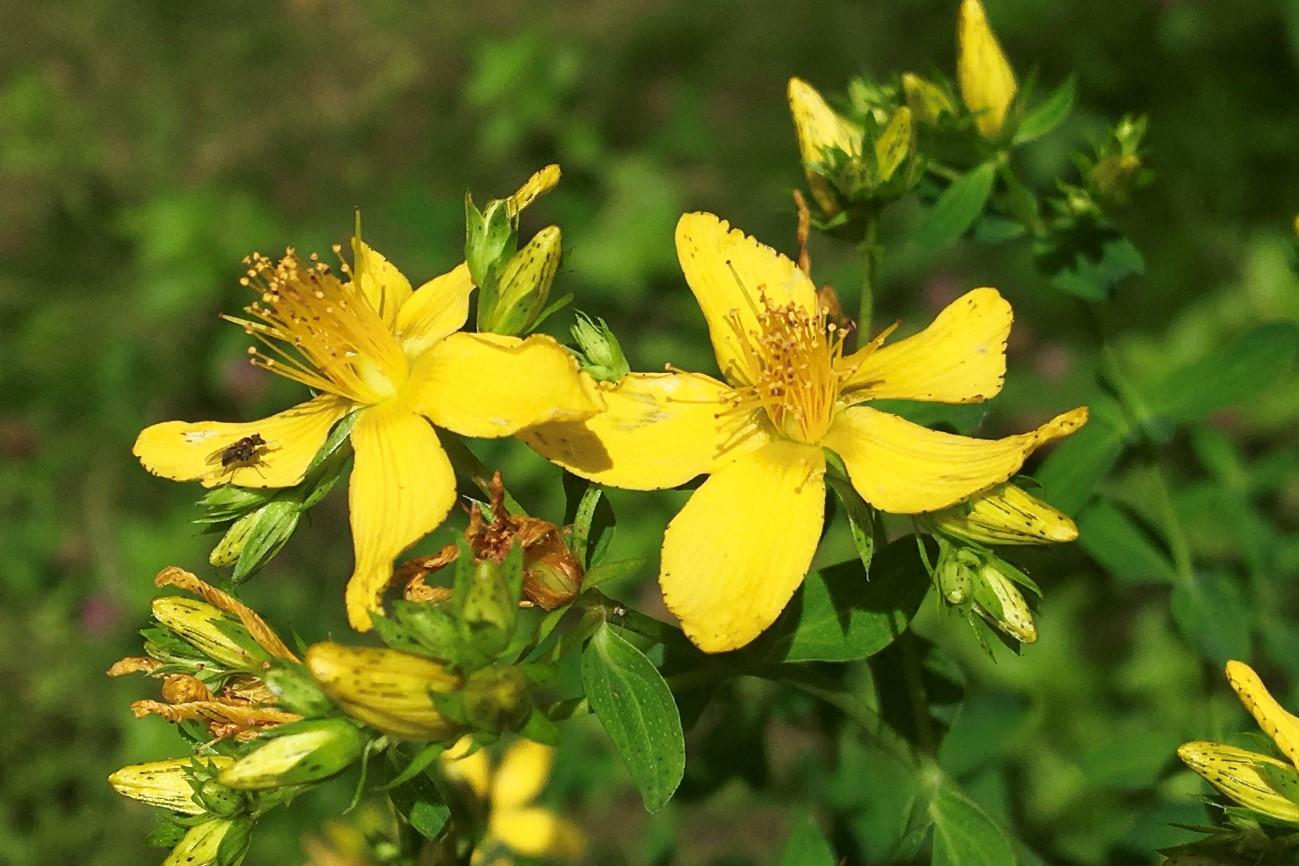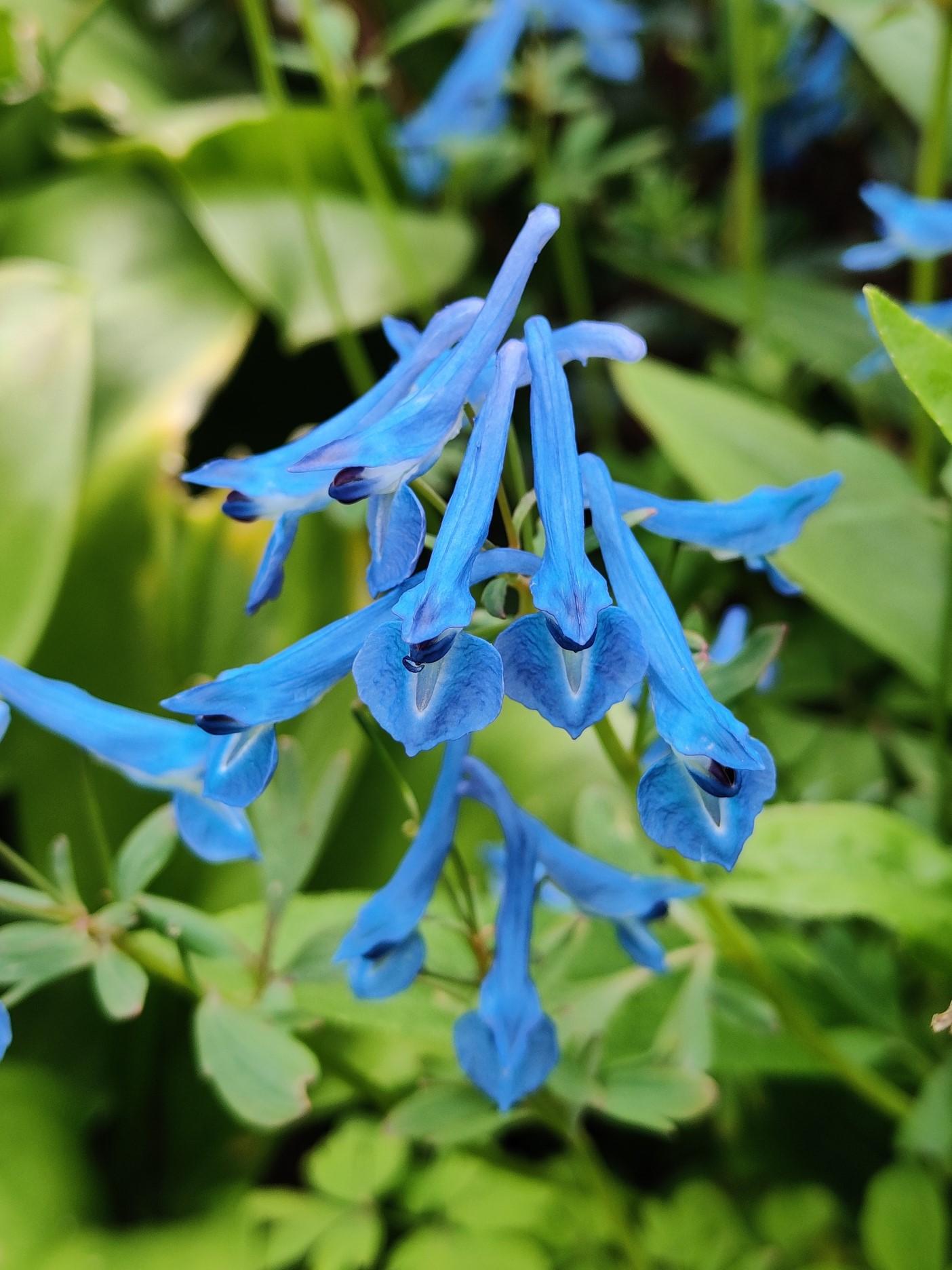
5 minute read
The Pagan Page James Uzzell
Midsummer
James Uzzell
Advertisement
June 20th-22nd, Summer Solstice; a time when the Sun King’s energy is at its highest, the lifeforce caresses the thriving fields of our Mother Earth, and we are enchanted by the delights of the sweetest breeze. Yet now we've turned the wheel of the year past its halfway point, we begin the slow wane back towards Yule, always asking ourselves whether this wheel is turning faster and faster.
Meanwhile, it's perhaps true that these perpetual lockdown sun-days accrue a certain quality; one that lets in all the intoxicating magick of the Linden flower (Tilia x europea) and the Rose (Rosa sp.). It’s an enchantment that offers a reprieve from the normal speed of the world, lets us sit in the warm grass and find the sweetest of scarlet-skinned Strawberries (Fragaria x ananassa) ripening between the green. Some would say it’s a blessing of love, to have our attachment to time severed by this moment of beauty and bounty. A blessing from the God and Goddess. Some say that their marriage aligns with the start of summer, at Beltane, when the Maythorn (Crataegus monogyna) flowers, but others cite the Summer Solstice, when the sun is at its zenith and the Goddess is pregnant with life. Whichever variation is followed, you'll find names and celebrations of this time of the year on all continents around the world. Summer Solstice in the northern hemisphere, Winter Solstice in the southern. Within neo-paganism in the U.K., the terms ‘Midsummer’, ‘Litha’, and ‘Alban Hefin’ are the most commonly heard. In modern Druidry, ‘Alban Hefin’— meaning ‘light of summer’ or ‘light of the shore’ in Welsh — was coined by the 18th Century Welsh Romantic, Edward Williams, or Iolo Morganwg to give him his bardic name (Owen, 1832). The term Litha (līþa) is widely used in Wicca and derives from the old Germanic name for the month of June.
Some Pagans see this day as the moment when the Oak King is crowned. Born as the tiniest of light at the time of the Winter Solstice the Sun/Oak King has now grown in strength and power and shows his face at his Zenith. The Oaken Crown of the Waxing Year is placed upon his head. But at that exact same time the Holly King is born, he who grows during the Waning Year and is crowned with Holly at the Winter Solstice, and thus the Wheel turns…
(Damh The Bard, Member of the Order of Bards, Ovates and Druids) This notion of a god of summer/light and a god of winter/darkness ruling in balance is one that recurs in many myths from many times. Often depicted as a fight for power, often between twins or perhaps between hero and dragon or serpent (see Franklin, 2010), we must resist the interpretation that one is evil and the other good. They are simply two sides of the same coin, a way of accepting the world for what it is, a nod of respect to the natural cycles and hardships through which we all live. Only when this balance was tipped, the stories altered to fit new narratives, do we see the rise of Saints killing dragons rather than simply defeating them for the summer; instead of ruling equally, light is depicted as good, victorious over the evil of the dark.
The alignment of Midsummer to the 23rd-24th of June was a Christian appropriation, to honour the Feast of St. John. When missionaries came to these Isles, preaching that the birth of St. John the Baptist took place six months before the birth of Jesus— much like the Oak and Holly Kings —it was easy to convince many towns to adjust their dates, whilst celebrating the eve and the day in much the same way pagan peoples had always celebrated— with fires, feasts and festivities. This most likely led to the naming of the sunshaped flowering herb, St John’s Wort (Hypericum perforatum). It was said that a garland of St. John’s Wort, when harvested in the Midsummer morning dew, would grant the wearer marriage within the year. Often depicted as a wild man, St. John may have taken both the pagan Midsummer for his birthday, and appropriated the image of earlier gods. The Green Man, in his vegetative form, can be found carved on many churches around Europe, and Wiccan philosophers see a link between the Saint and Tammuz/Adonis, the Green God of the ancient Sumer civilisation (Franklin, 2010).
In the British Isles, when we think of the Solstice, it's impossible not to think of our numerous standing stones, specifically Stonehenge. The Neolithic solar calendar has been the epicentre of modern celebrations, as people gather to watch the sun rise at the Heel stone. Since at least 1905, neo-druids have gathered there. But the ever-larger crowds at Stonehenge are not to everyone's taste. If, like me, you seek solace at the Solstice, then I urge you to visit your local standing stones. Find a

local hill, make a flask of seasonal tea, and watch the dazzling colours of the sun bless our predawn sky. Of an estimated 4,000 stones around the British Isles and Brittany, and a further 35,000 across Europe (Burl, 2000), over 1,300 are still standing.
Although I’m aware we are now heading into July, and you’ve been catching the sweet scents of the Elderflower (Sambucus nigra) for a few weeks now, it’s still worth taking a moment to sit with the consciousness of generations before us, to mark this time of abundance, to breathe into our deepest ancestral memories. As you pick the fruits and herbs of our Mother, let the Faerie that come out to dance on Midsummer fill them with blessings for our waning year. And while the sun rests at its highest in the sky, breathe in an abundance of gratitude, and breathe out creative fire and potential. At one with all those before, and all those after. Such is the beauty of life. Blessed be.
Images, all by James Uzzell: Strawberry (Fragaria x ananassa) St. John’s Wort (Hypericum perforatum) Sunrise over Shkodra Lake References Burl, A. (2000). The Stone Circles of Britain, Ireland and Brittany. Yale University Press. Damh The Bard (2021) Thinking About— The Summer Solstice, [Accessed via https://www.paganmusic.co.uk, June 2021] Franklin, A. (2010) Midsummer: Magical Celebrations of The Summer Solstice, Lear Books. Owen, W. (1832) A Dictionary of the Welsh Language: Explained in English; with Numerous Illustrations.












